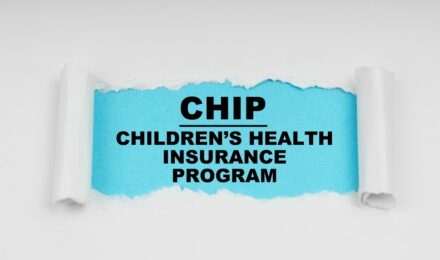Contents
For decades, the rising cost of higher education in the United States has outpaced inflation and wage growth, placing increasing pressure on families and borrowers. Federal student aid programs have often absorbed these costs by expanding loan availability, especially through Parent PLUS and Grad PLUS loans. Critics argue that this cycle of easy credit and rising tuition created a system where colleges had little incentive to contain costs.
In 2025, Congress approved sweeping reforms to federal loan programs, including strict annual and lifetime borrowing caps. These changes mark a turning point: for the first time in years, institutions may face real limits on the federal aid families can access. The central question is whether these caps will force universities to restrain tuition growth—or simply shift costs onto students through other means.
The Link Between Aid and Tuition
Economists have long debated whether federal aid availability contributes to tuition inflation. The so-called “Bennett Hypothesis,” named after former Education Secretary William Bennett, suggests that colleges raise prices in response to greater aid access. While the relationship is complex, evidence indicates that certain institutions—especially private and professional schools—may indeed adjust tuition based on available borrowing capacity.
By capping Parent PLUS and eliminating Grad PLUS loans, Congress effectively cut off two major sources of unlimited federal credit. Families and graduate students will now face borrowing limits that make it harder to finance soaring tuition through federal programs alone.
Institutional Pressures
For universities, these changes create significant financial and strategic challenges. High-cost private institutions and professional schools that relied heavily on PLUS loans may see enrollment declines if students can no longer bridge the gap with federal aid. Public universities, while more affordable, could also feel pressure if state funding remains stagnant and families cannot make up the difference.
Institutions face a choice: restrain tuition growth to keep education affordable under the new aid caps, or risk losing students to more affordable alternatives such as community colleges, state schools, or workforce training programs.
Potential Consequences for Students
The new aid caps have mixed implications for students and families. On one hand, the restrictions may discourage overborrowing, protecting households from unsustainable debt. On the other, they may limit access to high-cost institutions, particularly for families without substantial savings or private financing options.
- Low- and middle-income families may find themselves priced out of selective colleges that rely on tuition revenue.
- Graduate and professional students could face increased reliance on private loans with higher interest rates and fewer borrower protections.
These dynamics raise concerns about equity and the potential for widening disparities between students with financial resources and those without.
Market Responses
Some policymakers hope that reduced federal credit availability will force colleges to become more efficient. Universities may respond by offering more institutional aid, restructuring degree programs, or slowing tuition increases to remain competitive. Already, some institutions are experimenting with accelerated degree pathways, tuition guarantees, or expanded online programs to attract cost-conscious students.
However, there is also the risk that universities will double down on alternative financing strategies. This could include expanding reliance on private lenders, promoting income-share agreements (ISAs), or raising fees for services not directly tied to tuition. Such strategies may preserve revenue streams but do little to address affordability in a sustainable way.
Broader Policy Context
The push for tuition control cannot be separated from broader trends in higher education finance. State disinvestment in public universities has shifted more costs to students over the past several decades. Without renewed state funding, federal aid caps alone may not be sufficient to reduce upward pressure on tuition.
At the same time, demographic shifts—including declining birth rates—are shrinking the pool of traditional college-aged students. Many institutions are already struggling with enrollment declines. For these schools, controlling tuition growth may be a matter of survival rather than choice.
The Risk of Stratification
One unintended consequence of aid caps may be greater stratification across the higher education system. Elite institutions with large endowments can use institutional aid to cushion students against borrowing limits, preserving access for low-income students. By contrast, less wealthy colleges may struggle to fill the gap, leaving their students with fewer financing options.
This dynamic risks deepening inequality by concentrating opportunity among institutions with strong financial reserves while undermining access at less affluent colleges.
Preparing for the New Reality
For families, the key to navigating this transition is careful financial planning. Understanding the limits of federal aid, projecting likely costs across multiple years, and exploring state-level grants and institutional scholarships will be more important than ever. Families may also want to evaluate alternative pathways such as community college transfers, employer tuition benefits, or accelerated degree programs to reduce costs.
For policymakers, the challenge is to ensure that aid caps do not simply shift the burden onto students without producing meaningful tuition moderation. This could require pairing borrowing limits with increased investment in Pell Grants, state funding, or targeted affordability initiatives.
Conclusion
The introduction of strict federal loan caps represents a historic shift in higher education finance. While the policy is intended to curb unsustainable borrowing and encourage tuition restraint, its real-world effects remain uncertain. Institutions may respond with innovation and efficiency—or with strategies that shift costs elsewhere.
For students and families, the new reality demands greater financial awareness and proactive planning. For policymakers, the challenge lies in ensuring that reforms achieve their intended goals without undermining access and equity. Whether aid caps truly reshape tuition costs will depend on how universities, states, and families adapt in the years ahead.
References
- HEAG – 2025 Budget Law: Key Changes to Student Aid Programs
- The College Investor – Impact of Loan Caps on Higher Education
- Brookings Institution – Tuition and Federal Student Aid
Contents
For decades, the rising cost of higher education in the United States has outpaced inflation and wage growth, placing increasing pressure on families and borrowers. Federal student aid programs have often absorbed these costs by expanding loan availability, especially through Parent PLUS and Grad PLUS loans. Critics argue that this cycle of easy credit and rising tuition created a system where colleges had little incentive to contain costs.
In 2025, Congress approved sweeping reforms to federal loan programs, including strict annual and lifetime borrowing caps. These changes mark a turning point: for the first time in years, institutions may face real limits on the federal aid families can access. The central question is whether these caps will force universities to restrain tuition growth—or simply shift costs onto students through other means.
The Link Between Aid and Tuition
Economists have long debated whether federal aid availability contributes to tuition inflation. The so-called “Bennett Hypothesis,” named after former Education Secretary William Bennett, suggests that colleges raise prices in response to greater aid access. While the relationship is complex, evidence indicates that certain institutions—especially private and professional schools—may indeed adjust tuition based on available borrowing capacity.
By capping Parent PLUS and eliminating Grad PLUS loans, Congress effectively cut off two major sources of unlimited federal credit. Families and graduate students will now face borrowing limits that make it harder to finance soaring tuition through federal programs alone.
Institutional Pressures
For universities, these changes create significant financial and strategic challenges. High-cost private institutions and professional schools that relied heavily on PLUS loans may see enrollment declines if students can no longer bridge the gap with federal aid. Public universities, while more affordable, could also feel pressure if state funding remains stagnant and families cannot make up the difference.
Institutions face a choice: restrain tuition growth to keep education affordable under the new aid caps, or risk losing students to more affordable alternatives such as community colleges, state schools, or workforce training programs.
Potential Consequences for Students
The new aid caps have mixed implications for students and families. On one hand, the restrictions may discourage overborrowing, protecting households from unsustainable debt. On the other, they may limit access to high-cost institutions, particularly for families without substantial savings or private financing options.
- Low- and middle-income families may find themselves priced out of selective colleges that rely on tuition revenue.
- Graduate and professional students could face increased reliance on private loans with higher interest rates and fewer borrower protections.
These dynamics raise concerns about equity and the potential for widening disparities between students with financial resources and those without.
Market Responses
Some policymakers hope that reduced federal credit availability will force colleges to become more efficient. Universities may respond by offering more institutional aid, restructuring degree programs, or slowing tuition increases to remain competitive. Already, some institutions are experimenting with accelerated degree pathways, tuition guarantees, or expanded online programs to attract cost-conscious students.
However, there is also the risk that universities will double down on alternative financing strategies. This could include expanding reliance on private lenders, promoting income-share agreements (ISAs), or raising fees for services not directly tied to tuition. Such strategies may preserve revenue streams but do little to address affordability in a sustainable way.
Broader Policy Context
The push for tuition control cannot be separated from broader trends in higher education finance. State disinvestment in public universities has shifted more costs to students over the past several decades. Without renewed state funding, federal aid caps alone may not be sufficient to reduce upward pressure on tuition.
At the same time, demographic shifts—including declining birth rates—are shrinking the pool of traditional college-aged students. Many institutions are already struggling with enrollment declines. For these schools, controlling tuition growth may be a matter of survival rather than choice.
The Risk of Stratification
One unintended consequence of aid caps may be greater stratification across the higher education system. Elite institutions with large endowments can use institutional aid to cushion students against borrowing limits, preserving access for low-income students. By contrast, less wealthy colleges may struggle to fill the gap, leaving their students with fewer financing options.
This dynamic risks deepening inequality by concentrating opportunity among institutions with strong financial reserves while undermining access at less affluent colleges.
Preparing for the New Reality
For families, the key to navigating this transition is careful financial planning. Understanding the limits of federal aid, projecting likely costs across multiple years, and exploring state-level grants and institutional scholarships will be more important than ever. Families may also want to evaluate alternative pathways such as community college transfers, employer tuition benefits, or accelerated degree programs to reduce costs.
For policymakers, the challenge is to ensure that aid caps do not simply shift the burden onto students without producing meaningful tuition moderation. This could require pairing borrowing limits with increased investment in Pell Grants, state funding, or targeted affordability initiatives.
Conclusion
The introduction of strict federal loan caps represents a historic shift in higher education finance. While the policy is intended to curb unsustainable borrowing and encourage tuition restraint, its real-world effects remain uncertain. Institutions may respond with innovation and efficiency—or with strategies that shift costs elsewhere.
For students and families, the new reality demands greater financial awareness and proactive planning. For policymakers, the challenge lies in ensuring that reforms achieve their intended goals without undermining access and equity. Whether aid caps truly reshape tuition costs will depend on how universities, states, and families adapt in the years ahead.






